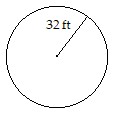Solve the inequality.For the function h(x) =  , solve h(x) < 0.
, solve h(x) < 0.
A. (-?, 0) ? (2, 6)
B. [2, 6]
C. (-?, 2] ? [6, ?)
D. (-?, 2) ? (6, ?)
Answer: A
You might also like to view...
Find the constant term to be added to the expression to form a perfect square trinomial.x2 +  x
x
A. -81
B. 0
C. 81
D. 
Find the radius or diameter as requested.Find the diameter.
A. 64 ft B. 100.48 ft C. 16 ft D. 3,215.36 ft
Provide an appropriate response.The primary advantage(s) to a taxpayer that itemizes deductions is:
A. interest on certain loans may be included B. all of these are advantages typically associated with itemizing deductions C. taxpayers will reduce taxable income when compared to the standard deduction D. charitable contributions may be included
Solve the problem.Bob, the incredible shrinking man, loses half of his height each day after he was exposed to a mysterious form of cosmic radiation. How many days before he is literally "knee-high to a grasshopper"? Assume that a grasshopper's knee is 4 millimeters high and that Bob is 2 meters tall. Round your answer to the nearest whole day. (1000 millimeters = 1 meter)
Fill in the blank(s) with the appropriate word(s).